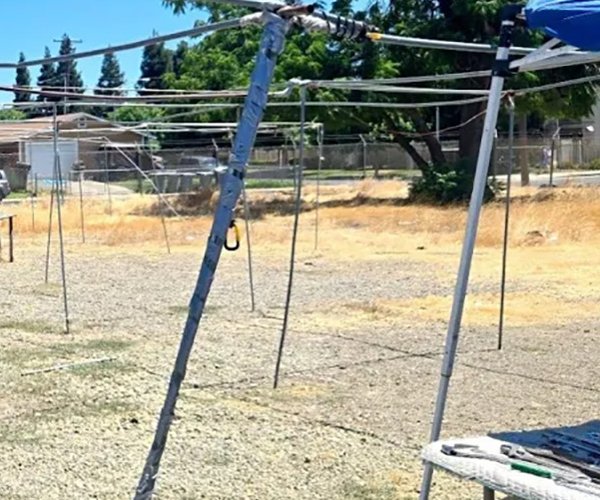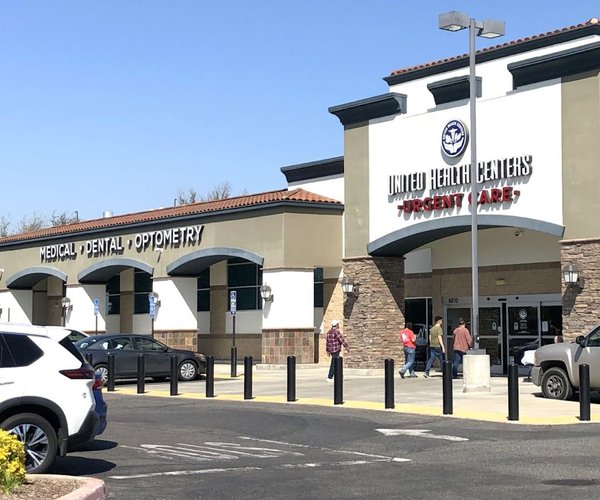When a pregnant female nutria turned up in a Merced County beaver trap over two years ago, the State of California’s Department of Fish and Wildlife collectively held its breath.
“We all crossed our fingers and knocked on wood that it was a solo animal,” Valerie Cook recalled.
Today, Cook oversees much of the CDFW’s Nutria Eradication Program, formed shortly after that first nutria was captured. In the following months an additional 25 were discovered, kicking off an eradication effort that has since seen nearly 700 of the invasive, semi-aquatic rodents taken in five counties throughout the state.
Native to South America, nutria pose a “triple threat” to California’s future. Similar to native species like muskrats, otters and beavers, the large, rat-like creatures are a top-rated agricultural pest that threatens the state’s nearly $50 billion farm economy. They destroy critical wetlands needed by the native wildlife, like the Los Banos Wildlife Area, and pose a public safety risk as their destructive burrowing can damage water infrastructure like levees and canals.
Since March 2017, CDFW has taken 578 nutria from Merced County, 70 from San Joaquin County, 37 from Stanislaus County, two from Mariposa County and one from Fresno County. Nutria have also been confirmed in Tuolumne County, signaling an epidemic that must be stopped quickly.

“We have a limited window of opportunity where we’ve got to be able to respond with adequate resources to be able to eradicate before this population grows too much,” Cook said. “If we don’t do this job and eradicate them, we’ll be dealing with devastated wetlands, complete loss of wetland soils, damage to our waterways, burrowing in our infrastructure that damages our agriculture and our flood protection. This is really the trifecta of damage even far beyond what’s dealt with in other states.”
This isn’t the first time California has battled nutria. They were originally brought to the state in 1899 for the fur trade, and nutria farms were eventually licensed in California in the mid-1900s. Upon the industry’s collapse, the rodents were either turned loose or escaped. After a statewide effort, the species was formally declared eradicated in California in the 1970s but has since turned up again.
States like Louisiana and Maryland have battled the species as well, one more successfully than the other. In Louisiana there are over 400,000 of the rodents taken annually, with the state even offering a bounty on nutria. Maryland’s Blackwater National Wildlife Refuge saw over 50 percent of its marshes converted to open water between 1939 and 1989, due to the destructive feeding habits of its large nutria population.
It took the state 20 years, but Maryland is now incredibly close to declaring nutria eradicated, and CDFW is utilizing nearly $10 million in state funding to mimic the state’s efforts. Gov. Gavin Newsom’s recently-announced budget provides almost $2 million to aid the nutria program, and the Delta Conservancy has awarded it $8.5 million over three years.
CDFW plans to enact a “Judas” nutria program, taking wild nutria, sterilizing them and releasing them back into the wild with tracking devices in order to lead eradication efforts to the rest of the population. Nutria dogs are also in the works, which will help sniff out the destructive rodents.
Eventually, CDFW will have 40 employees out in the field, though the program is currently operating at about a third of that number. Even so, the team has put out over 1,500 different trap sets and confirmed nutria in over 150 sites.
“We know what we’ve accomplished so far…but the reality is we’ve got to get out there and jump on this thing, and put all the resources up front so we don’t deal with the delays and the growth down the road,” Cook said.
The problem has attracted federal attention as well. Rep. Josh Harder visited the Los Banos Wildlife Area on Friday afternoon, slipping on a pair of waders and hopping into the water to see the state’s eradication efforts firsthand. He introduced H.R. 3399 in June, which would direct $7 million in federal funding to California’s nutria program specifically.
“It’s something that I’ve heard again and again from our ag community as one of their top concerns,” Harder said.
Nutria taken from Stanislaus County have even been found in almond orchards, where the rodents see trees as a potential food source. According to Cook, the nutria are known to gnaw at the base of fruit and nut trees, and the rodents also pose a threat to the canal systems that transport water to crops in the Valley.
“It puts our trees at risk, but it also puts our entire ecosystem, canals and irrigation systems at risk,” Harder said. “The solution is we need to be able to nip it in the bud, and the way we nip it in the bud is we make sure that we take it seriously, we try to educate our population…and make sure we put the resources toward the programs that are actually going to help it.”
Democrat Valley Reps. Jim Costa, TJ Cox and John Garamendi serve as cosponsors for H.R. 3399, though Harder said the bill has bipartisan support in Congress.
“It’s taken 20 years for Maryland to get to the position where they’re at now which is still not eradication, so we need a little bit more long-term thinking about how we can actually build a self-sustaining program,” Harder said.
According to Cook, current state funding for the nutria program will allow it to operate at full force for another three years. Federal funding would help immensely, ensuring the state is able to get a hold on what could potentially become a devastating epidemic.
“I’ve been pretty optimistic about the fact that this isn’t a partisan issue,” Harder said. “If you care about the food that we eat, if you care about going to the supermarket and buying almond buying milk, then you need to care about what we can do to make sure that ag in California continues to be strong and that requires us to actually eradicate nutria.”









